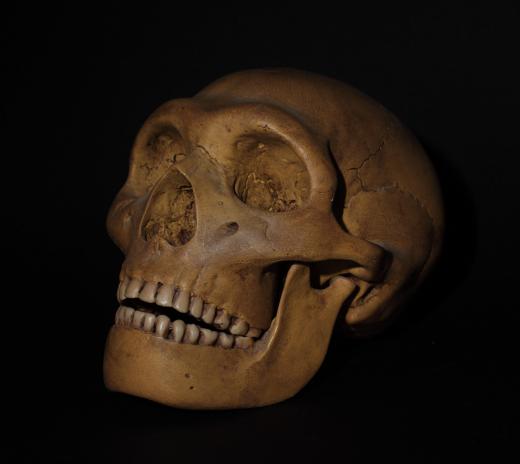What Was Homo Ergaster?
 Mary McMahon
Mary McMahon
Homo ergaster was an early hominid species, and an important member of the human family tree. There is, however, some dispute over the classification of Homo ergaster. Some people believe that these early humans were actually a subspecies of Homo erectus, another early hominid, rejecting the classification of these human ancestors in a separate species. There is some debate as to which fossilized remains should be considered Homo ergaster versus Homo erectus. This species designation is widely used enough that it is unlikely to go away entirely without significant new fossil evidence, however.
From the Homo ergaster fossils which have been found, scientists estimate that these hominids lived during the Pleistocene era, around the time that the Earth was going through a cycle of cooling. Differences between Homo ergaster and earlier ancestors suggest that these hominids evolved certain new traits in response to global cooling, including the ability to range far afield in search of food as their native climates changed.

The name of this hominid species comes from the Greek ergaster, which means “workman,” a reference to the advanced tools which have been found as fossil sites with Homo ergaster remains. Homo habilis, the earlier ancestor of Homo ergaster, certainly also used tools, but not as effectively and creatively. Homo ergaster also appears to have developed new uses for fire, which set the stage for some major changes in human evolution.
Modern humans would find some things in common with Homo ergaster. This hominid species was lanky, with a narrow pelvis designed for upright walking and a barrel shaped chest. However, Homo ergaster also had a prominent brow ridge and a protruding jaw which would seem alien to modern humans. Archaeologists believe that these hominids probably lived socially together and vocalized, as fossil evidence suggests that they had the specialized muscles needed to form words. They probably also had dark skin to protect themselves from the sun, and it appears that Homo ergaster may have been one of the first hominids to sweat.
One of the more important Homo ergaster finds occurred in 1984 at Lake Turkana, Kenya. Richard Leaky, Kamoya Kimeu, and Tim White discovered the almost complete skeleton of a young boy, estimated to be around 12 years old. Turkana Boy, as he is called, was a breakthrough find because he provided a more complete picture of that these hominids might have looked like.
AS FEATURED ON:
AS FEATURED ON:











Discuss this Article
Post your comments